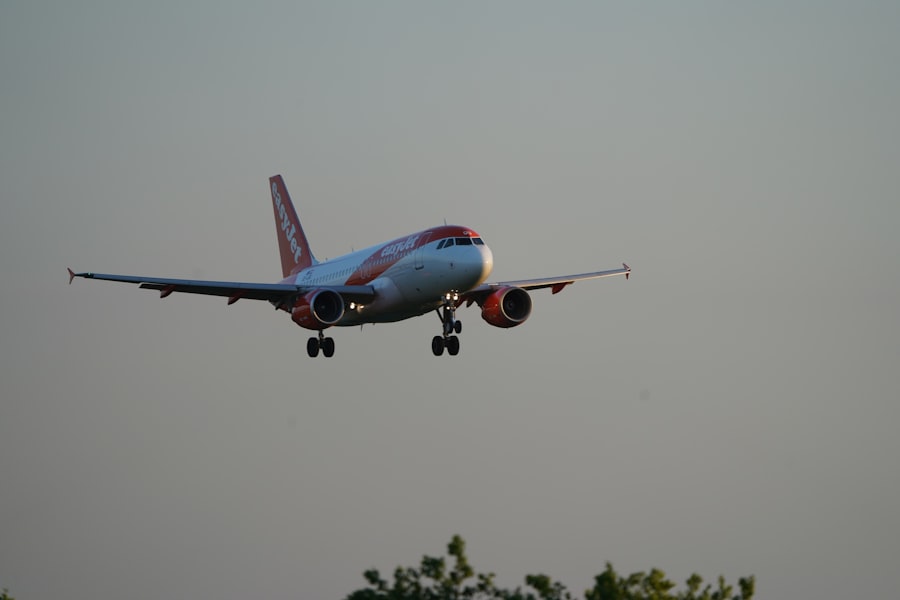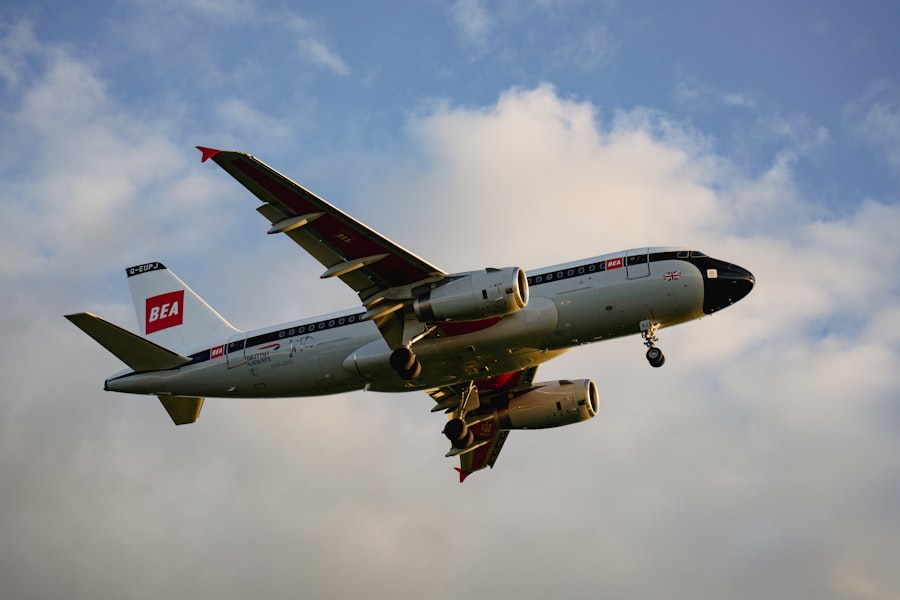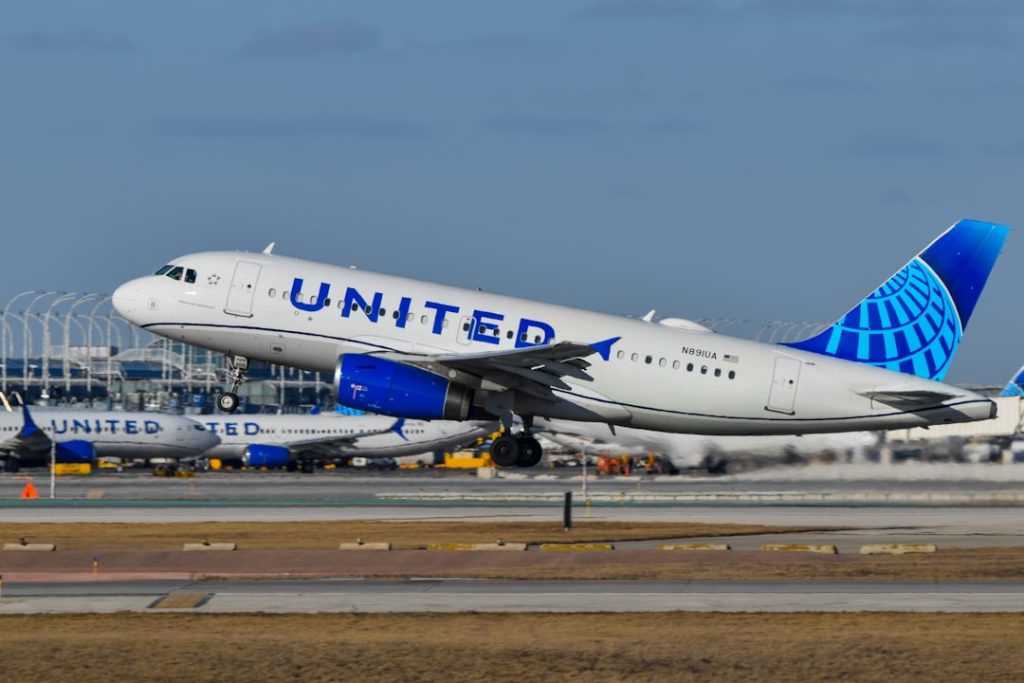The Airbus A319 is a member of the A320 family, which has become one of the most popular and widely used aircraft in commercial aviation. Introduced in the late 1990s, the A319 was designed to cater to the needs of airlines operating short to medium-haul routes. With a typical seating capacity of around 140 to 160 passengers, depending on the configuration, the A319 strikes a balance between efficiency and comfort.
Its design incorporates advanced aerodynamics and materials, which contribute to its performance and operational capabilities. The aircraft is powered by two CFM International CFM56 or International Aero Engines V2500 engines, both of which are known for their reliability and efficiency. The A319’s range is approximately 3,750 nautical miles, allowing it to serve a variety of routes, from domestic flights to transcontinental journeys.
The aircraft’s versatility has made it a favorite among airlines worldwide, with operators ranging from low-cost carriers to major international airlines. As air travel continues to evolve, the A319 remains a significant player in the aviation landscape, adapting to changing market demands and technological advancements.
Key Takeaways
- The Airbus A319 is a popular single-aisle aircraft known for its versatility and range, making it suitable for both short and medium-haul flights.
- The A319 is designed with fuel efficiency in mind, featuring advanced aerodynamics and lightweight materials to reduce fuel consumption and emissions.
- With its advanced avionics and efficient design, the A319 offers operational efficiency by reducing turnaround times and increasing overall productivity for airlines.
- The A319 has a lower environmental impact compared to older aircraft, thanks to its fuel-efficient engines and reduced noise levels, making it a more sustainable choice for airlines.
- The A319 offers cost efficiency for airlines, with lower operating costs and maintenance requirements, making it a popular choice for budget-conscious carriers.
Fuel Efficiency of the Airbus A319
Fuel efficiency is a critical factor in the operational success of any commercial aircraft, and the Airbus A319 excels in this area. The aircraft’s design incorporates advanced aerodynamic features, such as wingtip fences and a sleek fuselage, which reduce drag and enhance fuel economy. The A319 typically consumes around 3.5 liters of fuel per 100 passenger kilometers, making it one of the more fuel-efficient options in its class.
This efficiency is particularly advantageous for airlines operating on tight margins, as it directly impacts operating costs. Moreover, the A319’s engines are designed with fuel efficiency in mind. The CFM56 and V2500 engines utilize advanced technologies such as high bypass ratios and improved combustion processes, which contribute to lower fuel consumption and reduced emissions.
Airlines that operate the A319 can benefit from significant savings on fuel costs, especially in an era where fuel prices can fluctuate dramatically. This fuel efficiency not only enhances the profitability of airlines but also aligns with global efforts to reduce carbon footprints in aviation.
Operational Efficiency of the Airbus A319

Operational efficiency is another hallmark of the Airbus A319, making it an attractive choice for airlines looking to optimize their fleets. The aircraft’s design allows for quick turnaround times at airports, which is essential for maximizing flight schedules and minimizing ground time. With a spacious cabin layout that can be configured for various seating arrangements, airlines can easily adapt the A319 to meet specific route demands or passenger preferences.
Additionally, the A319’s advanced avionics and flight management systems contribute to its operational efficiency. These systems enable pilots to optimize flight paths and manage fuel consumption effectively during all phases of flight. The aircraft’s ability to operate from shorter runways also opens up opportunities for airlines to serve regional airports that may not accommodate larger aircraft.
This flexibility allows airlines to tap into underserved markets and expand their route networks without compromising on efficiency.
Environmental Impact of the Airbus A319
| Environmental Impact of the Airbus A319 | |
|---|---|
| Carbon Emissions | 2.5 kg CO2 per passenger per 100 km |
| Fuel Efficiency | 3.5 liters per 100 km per passenger |
| Noise Level | 85.1 dB during takeoff |
| NOx Emissions | 0.5 g per kg of fuel burned |
In recent years, environmental concerns have taken center stage in the aviation industry, prompting manufacturers like Airbus to prioritize sustainability in their designs. The Airbus A319 is no exception; its fuel-efficient engines and aerodynamic design significantly reduce greenhouse gas emissions compared to older aircraft models. The aircraft’s reduced noise footprint also contributes to its environmental credentials, making it a suitable option for operations in noise-sensitive areas.
Airbus has also implemented various initiatives aimed at further reducing the environmental impact of its aircraft. For instance, the company has invested in research and development focused on alternative fuels and innovative technologies that could lead to even lower emissions in the future. The A319’s compatibility with sustainable aviation fuels (SAFs) allows airlines to further decrease their carbon footprints while maintaining operational performance.
As regulatory pressures increase and public awareness of climate change grows, the A319 stands out as a forward-thinking choice for environmentally conscious airlines.
Cost Efficiency of the Airbus A319
Cost efficiency is a crucial consideration for airlines when selecting aircraft for their fleets, and the Airbus A319 offers a compelling value proposition. The combination of its fuel efficiency, operational capabilities, and maintenance costs makes it an economically viable option for both legacy carriers and low-cost airlines alike. The aircraft’s ability to carry a substantial number of passengers over medium distances while consuming less fuel translates into lower overall operating costs.
Furthermore, the A319 benefits from economies of scale due to its popularity among airlines worldwide. This widespread adoption has led to a robust aftermarket support network, ensuring that parts and maintenance services are readily available at competitive prices. Airlines can also take advantage of training programs for pilots and maintenance personnel that are standardized across the A320 family, further reducing training costs and enhancing operational efficiency.
Passenger Comfort and Efficiency

Passenger comfort is an essential aspect of any commercial aircraft design, and the Airbus A319 does not disappoint in this regard. The cabin layout can be customized to suit various airline preferences, allowing for configurations that prioritize either passenger capacity or comfort. With a typical seat pitch ranging from 28 to 34 inches, passengers can enjoy a reasonable level of comfort during their flights.
Additionally, the cabin is designed with larger windows and improved lighting systems that enhance the overall flying experience. The A319 also features modern amenities that cater to passenger needs, such as in-flight entertainment systems and Wi-Fi connectivity options. These features are increasingly important as travelers seek more engaging experiences during their journeys.
Airlines operating the A319 can differentiate themselves by offering enhanced services that appeal to both business and leisure travelers alike. The balance between passenger comfort and operational efficiency makes the A319 an attractive choice for airlines aiming to provide quality service while maintaining profitability.
Maintenance and Reliability of the Airbus A319
Maintenance and reliability are critical factors that influence an airline’s operational success, and the Airbus A319 has established a reputation for both. The aircraft’s design incorporates durable materials and systems that require less frequent maintenance compared to older models. This reliability translates into higher aircraft availability and fewer disruptions in flight schedules, which are vital for maintaining customer satisfaction.
Airbus has also developed comprehensive maintenance programs tailored specifically for the A320 family, including the A319. These programs provide airlines with detailed guidelines on routine inspections, component replacements, and troubleshooting procedures. The availability of extensive technical documentation and support from Airbus ensures that operators can efficiently manage their fleets while minimizing downtime.
As a result, airlines can focus on delivering consistent service without being burdened by unexpected maintenance issues.
The Overall Efficiency of the Airbus A319
The Airbus A319 stands out as a highly efficient aircraft that meets the diverse needs of modern airlines while addressing environmental concerns and passenger expectations. Its fuel efficiency, operational capabilities, cost-effectiveness, passenger comfort features, and reliability make it an attractive option for carriers operating in competitive markets. As airlines continue to navigate challenges such as fluctuating fuel prices and increasing regulatory pressures regarding emissions, the A319 offers a balanced solution that aligns with both economic goals and sustainability initiatives.
In summary, the Airbus A319 exemplifies how innovation in aviation can lead to improved efficiency across multiple dimensions. Its design reflects a commitment to meeting contemporary demands while ensuring that airlines can operate profitably in an ever-evolving industry landscape. As air travel continues to grow globally, the A319 will likely remain a key player in shaping the future of commercial aviation.


